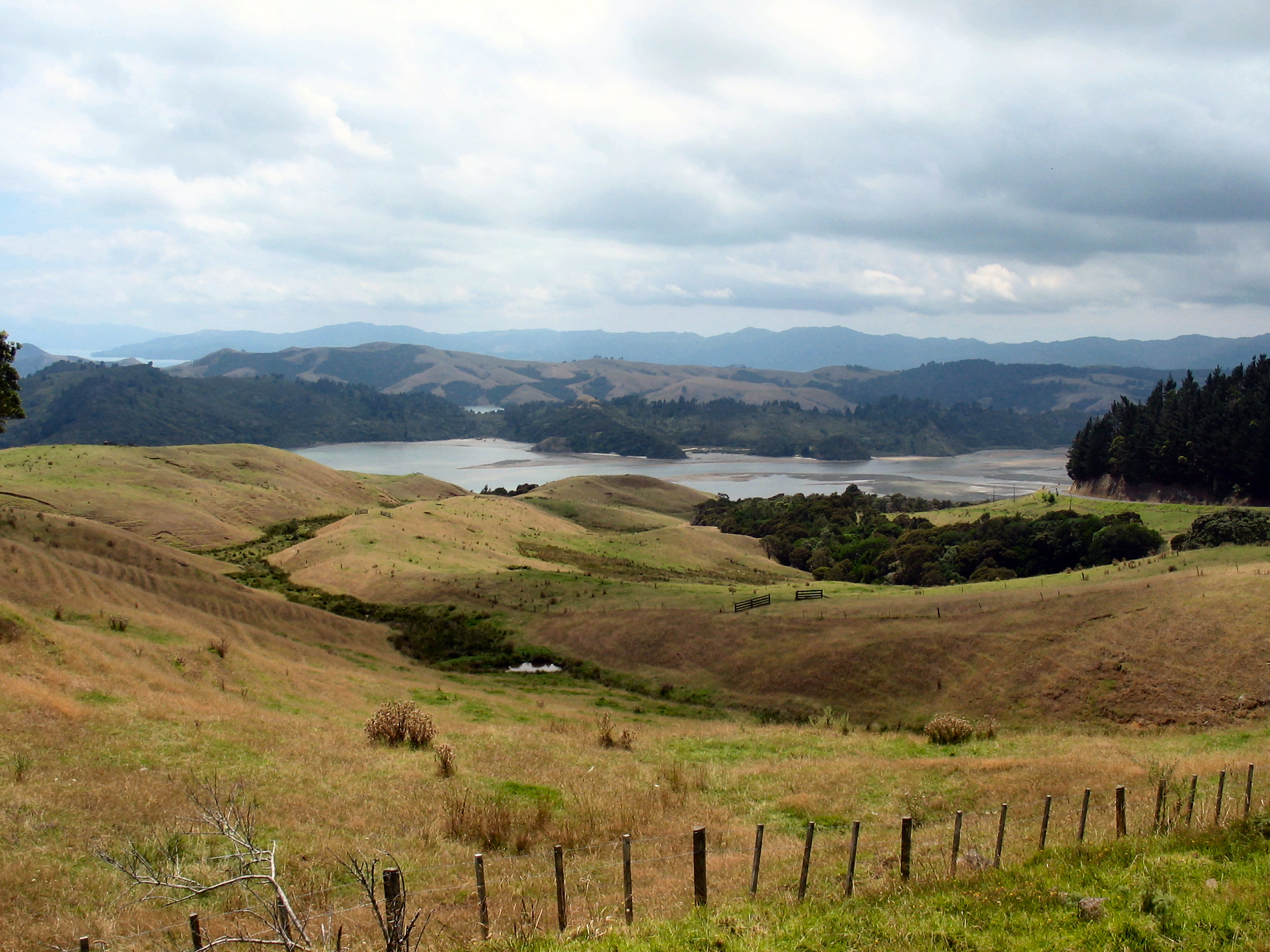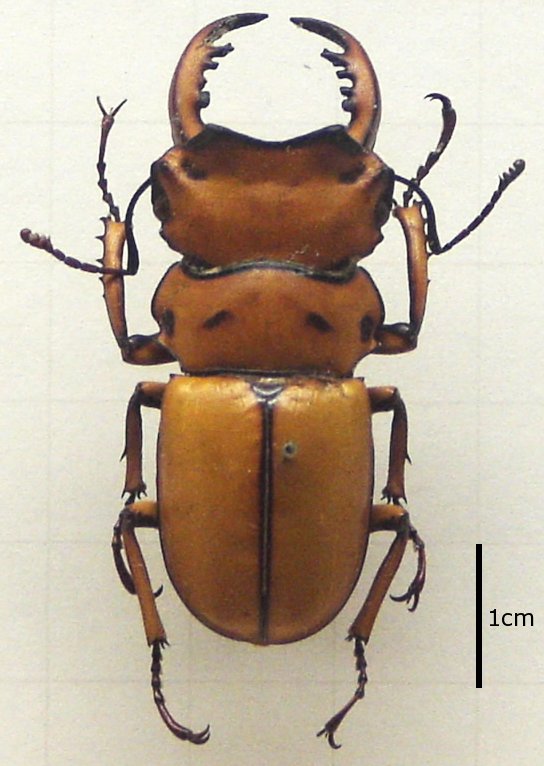|
Geodorcus Auriculatus
''Geodorcus auriculatus'' is a large flightless stag beetle that is found in the southern part of the Coromandel Peninsula and on Mount Te Aroha in the Kaimai range of New Zealand. Description ''Geodorcus auriculatus'' are large dull to glossy black or brownish black beetles. Their exoskeleton is covered in dots and minute hairs with four inconspicuous ribs. The length for male specimens ranges from 21 to 29 mm. This length includes their impressive mandibles. Female beetles have much less variation in their size, ranging in length from 19–20 mm. Their smaller mandibles allow them to be distinguished from male beetles. Their head is widest behind the eyes and distinctly depressed and smooth in males, less so in female beetles. Distribution ''Geodorcus auriculatus'' is found from Manaia on the western side of the Coromandel Peninsula to Mount Te Aroha in the Kaimai range, south of the Coromandel. They can be found from near sea level to 950m on Mount Te Aroha. Hab ... [...More Info...] [...Related Items...] OR: [Wikipedia] [Google] [Baidu] |
Des Helmore
Desmond W. Helmore (born 1940) is a New Zealand artist and illustrator, known both for his fine art and for his scientific work depicting insects, not least illustrating the New Zealand Arthropod Collection. One of the country's most noted and prolific biological illustrators, over 1000 of his illustrations of insects were published in research papers from 1976 to 2006. Life and education Helmore was born in Takapau, Hawke's Bay Region, Hawkes Bay, New Zealand, and lived there on a farm until age 12. Interested in drawing since childhood, he attended Christ's College, Christchurch, Christ's College in Christchurch, and then the Ilam School of Fine Arts at the University of Canterbury from 1959 to 1962, where he was taught by Rudolf Gopas, Rudi Gopas, Russell Clark (artist), Russell Clark, and Bill Sutton (artist), Bill Sutton. His fellow students at Ilam included Dick Frizzell, Tony Fomison, and John Panting. In his survey of New Zealand art, Frizzell described Helmore as s ... [...More Info...] [...Related Items...] OR: [Wikipedia] [Google] [Baidu] |
Stag Beetle
Stag beetles are a family of about 1,200 species of beetles in the family Lucanidae, currently classified in four subfamilies.Smith, A.B.T. (2006). A review of the family-group names for the superfamily Scarabaeoidea (Coleoptera) with corrections to nomenclature and a current classification. The Coleopterists Bulletin 60:144–204. Some species grow to over , but most to about . Overview The English name is derived from the large and distinctive mandibles found on the males of most species, which resemble the antlers of stags. A well-known species in much of Europe is ''Lucanus cervus'', referred to in some European countries (including the United Kingdom) as ''the'' stag beetle; it is the largest terrestrial insect in Europe. Pliny the Elder noted that Nigidius called the beetle ''lucanus'' after the Italian region of Lucania where they were used as amulets. The scientific name of ''Lucanus cervus'' adds ''cervus'', deer. Male stag beetles are known for their oversize mandi ... [...More Info...] [...Related Items...] OR: [Wikipedia] [Google] [Baidu] |
Coromandel Peninsula
The Coromandel Peninsula ( mi, Te Tara-O-Te-Ika-A-Māui) on the North Island of New Zealand extends north from the western end of the Bay of Plenty, forming a natural barrier protecting the Hauraki Gulf and the Firth of Thames in the west from the Pacific Ocean to the east. It is wide at its broadest point. Almost its entire population lives on the narrow coastal strips fronting the Hauraki Gulf and the Bay of Plenty. In clear weather the peninsula is clearly visible from Auckland, the country's biggest city, which lies on the far shore of the Hauraki Gulf, to the west. The peninsula is part of the Thames-Coromandel District of the Waikato region. Origin of the name The Māori name for the Coromandel comes from the Māori legend of Māui and the Fish, in which the demigod uses his hook to catch a great fish from the depths of te Moana-Nui-a-Kiwa (The Pacific Ocean). ''Te Tara-O-Te-Ika-A-Māui'' means 'The spine of Māui's fish'. The spine can be understood to be the C ... [...More Info...] [...Related Items...] OR: [Wikipedia] [Google] [Baidu] |
Mount Te Aroha
Te Aroha ( mi, Te Aroha-a-uta) is a rural town in the Waikato region of New Zealand with a population of 3,906 people in the 2013 census, an increase of 138 people since 2006. It is northeast of Hamilton and south of Thames. It sits at the foot of Mount Te Aroha, the highest point in the Kaimai Range. History The name Te Aroha derives from the Māori name of Mount Te Aroha. In one version, Rāhiri, the eponymous ancestor of Ngāti Rāhiri Tumutumu, climbed the mountain and saw his homeland in the distance and felt a sense of love () for it. The town is properly named ; meaning 'inland', so the town is named "love flowing inland". In some Tainui traditions, Rakataura, a tohunga of the ''Tainui'' waka, was one of the first people to leave the waka, settling at Rarotonga / Mount Smart. After a period of time, Rakataura decided to leave Tāmaki Makaurau and travel south, however during the journey his wife Kahukeke died. Eventually Rakataura settled at Te Aroha, naming the ... [...More Info...] [...Related Items...] OR: [Wikipedia] [Google] [Baidu] |
Kaimai Range
The Kaimai Range (sometimes referred to as the ''Kaimai Ranges'') is a mountain range in the North Island of New Zealand. It is part of a series of ranges, with the Coromandel Range to the north and the Mamaku Ranges to the south. The Kaimai Range separates the Waikato in the west from the Bay of Plenty in the east. The highest point of the range is Mount Te Aroha (952 m), at the foot of which is the town of Te Aroha. The range's terrain is rough, and only two roads pass over it: State Highway 2, across the northern end of the range through Karangahake Gorge, and State Highway 29 from Tauranga to Hamilton, New Zealand, Hamilton. Mt Te Aroha can be described as the northern head peak of the Kaimai Range. The New Zealand Ministry for Culture and Heritage gives a translation of "eat fermented food" for ''Kaimāī''. The Kaimai Ranges feature in local Maori folklore. The name Te Aroha translates from Maori as Te - The & Aroha - Love. Literally "the love". The name comes from a ... [...More Info...] [...Related Items...] OR: [Wikipedia] [Google] [Baidu] |
New Zealand
New Zealand ( mi, Aotearoa ) is an island country in the southwestern Pacific Ocean. It consists of two main landmasses—the North Island () and the South Island ()—and over 700 smaller islands. It is the sixth-largest island country by area, covering . New Zealand is about east of Australia across the Tasman Sea and south of the islands of New Caledonia, Fiji, and Tonga. The country's varied topography and sharp mountain peaks, including the Southern Alps, owe much to tectonic uplift and volcanic eruptions. New Zealand's capital city is Wellington, and its most populous city is Auckland. The islands of New Zealand were the last large habitable land to be settled by humans. Between about 1280 and 1350, Polynesians began to settle in the islands and then developed a distinctive Māori culture. In 1642, the Dutch explorer Abel Tasman became the first European to sight and record New Zealand. In 1840, representatives of the United Kingdom and Māori chiefs ... [...More Info...] [...Related Items...] OR: [Wikipedia] [Google] [Baidu] |
Manaia, Waikato
Manaia is a locality on the western side of the Coromandel Peninsula of New Zealand. It lies to the east of State Highway 25, south of Coromandel and north of Tapu. The Manaia River flows from the Coromandel Range through the area and into the Manaia Harbour to the west. The harbour contains mussel farms. The Manaia Forest Sanctuary, inland from Manaia, contains the sixth largest kauri tree in New Zealand. The Sanctuary contains about 410 kauri trees in an area of 101 hectares. The local iwi are Ngāti Whanaunga and Ngāti Pūkenga. Education Manaia School is a coeducational full primary (years 1-8) school with a decile rating of 2 and a roll of 42. A Manaia School is first mentioned in a Department of Education An education ministry is a national or subnational government agency politically responsible for education. Various other names are commonly used to identify such agencies, such as Ministry of Education, Department of Education, and Ministry of Pub ... report for 18 ... [...More Info...] [...Related Items...] OR: [Wikipedia] [Google] [Baidu] |
Wildlife Act 1953
Wildlife Act 1953 is an Act of Parliament in New Zealand. Under the act, the majority of native New Zealand vertebrate species are protected by law, and may not be hunted, killed, eaten or possessed. Violations may be punished with fines of up to $100,000. Wildlife are classified under a number of schedules; all vertebrate species not included in these lists are protected by default. The schedules are occasionally amended; for example the kea was granted full protection in 1984, whereas the spur-winged plover (masked lapwing), an Australian species which naturally established itself in New Zealand in the 1930s, had its protected status removed in 2012. The Act also provides for wildlife sanctuaries, refuges and management reserves. Schedules Schedule 1 – Wildlife declared to be game This group comprises commonly hunted waterfowl ( mallard, grey duck, Australasian shoveler, paradise shelduck, black swan and pukeko) and introduced game birds, including pheasant, quail, chuka ... [...More Info...] [...Related Items...] OR: [Wikipedia] [Google] [Baidu] |
Department Of Conservation (New Zealand)
The Department of Conservation (DOC; Māori: ''Te Papa Atawhai'') is the public service department of New Zealand charged with the conservation of New Zealand's natural and historical heritage. An advisory body, the New Zealand Conservation Authority (NZCA) is provided to advise DOC and its ministers. In addition there are 15 conservation boards for different areas around the country that provide for interaction between DOC and the public. Function Overview The department was formed on 1 April 1987, as one of several reforms of the public service, when the ''Conservation Act 1987'' was passed to integrate some functions of the Department of Lands and Survey, the Forest Service and the Wildlife Service. This act also set out the majority of the department's responsibilities and roles. As a consequence of Conservation Act all Crown land in New Zealand designated for conservation and protection became managed by the Department of Conservation. This is about 30% of New Z ... [...More Info...] [...Related Items...] OR: [Wikipedia] [Google] [Baidu] |
Lucaninae
The Lucaninae comprise the largest subfamily of the stag beetles (Lucanidae). Characteristics include partial to complete division of the eyes by a canthus, geniculate antennae, and distinctly separated coxae. The body is typically elongated and slightly flattened. Genera Some notable species are also listed: * '' Aegognathus'' * '' Aegus'' * '' Agnus'' * '' Allotopus'' * '' Amneidus'' * '' Andinolucanus'' * '' Aphanognathus'' * '' Apterocyclus'' * '' Apterodorcus'' Arrow, 1943 * '' Auxicerus'' * '' Bartolozziolucanus'' * '' Beneshius'' * '' Bomansius'' * '' Brasilucanus'' * '' Cacostomus'' ** '' C. squamosus'' * '' Calcodes'' * '' Cantharolethrus'' ** '' C. luxeri'' * '' Capreolucanus'' * ''Cardanus'' * '' Casignetus'' * '' Charagmophorus'' * '' Chewlucanus'' * '' Chiasognathus'' * '' Cladophyllus'' * '' Cladognathus'' * '' Colophon'' * '' Cyclommatus'' ** '' C. scutellaris'' * '' Dendezia'' * '' Diasomoides'' * '' Dinonigidius'' * '' Dorculus'' * '' Dorcus'' * '' Dynod ... [...More Info...] [...Related Items...] OR: [Wikipedia] [Google] [Baidu] |
Endemic Fauna Of New Zealand
Endemism is the state of a species being found in a single defined geographic location, such as an island, state, nation, country or other defined zone; organisms that are indigenous to a place are not endemic to it if they are also found elsewhere. For example, the Cape sugarbird is found exclusively in southwestern South Africa and is therefore said to be ''endemic'' to that particular part of the world. An endemic species can be also be referred to as an ''endemism'' or in scientific literature as an ''endemite''. For example '' Cytisus aeolicus'' is an endemite of the Italian flora. '' Adzharia renschi'' was once believed to be an endemite of the Caucasus, but it was later discovered to be a non-indigenous species from South America belonging to a different genus. The extreme opposite of an endemic species is one with a cosmopolitan distribution, having a global or widespread range. A rare alternative term for a species that is endemic is "precinctive", which applies to s ... [...More Info...] [...Related Items...] OR: [Wikipedia] [Google] [Baidu] |








.jpg)